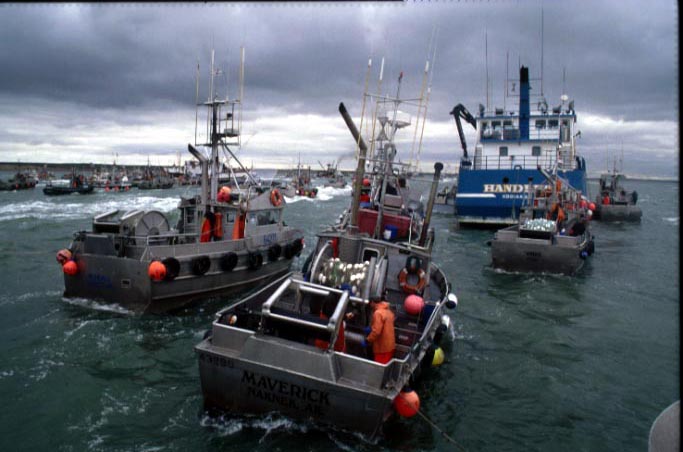Alaska fishermen can increase their federal trade relief funds by adding higher poundage prices for 15 fish and shellfish species. While it’s welcomed, the payouts are a Band-Aid on a bigger and ongoing problem.
Through Dec. 14, fishermen can apply to the U.S. Department of Agriculture Seafood Trade Relief Program (STRP) if their bottom line has been hurt by the Trump administration’s ongoing trade standoffs, primarily with China.
“STRP is part of a federal relief strategy to support fishermen and other producers while the administration continues to work on free, fair and reciprocal trade deals to open more markets to help American producers compete globally,” according to a USDA fact sheet.
The damages to fishermen are calculated as the difference with a trade tariff and the baseline without it based on 2019 catches.
For cod, for example, that adds up to an extra $0.14 a pound. So, a fisherman who had cod landings last year of 375,000 pounds would multiply that by $0.14 for a trade relief payment of $52,500.
Salmon fishermen can add $0.16 per pound across the board. For Alaska crabbers, $0.47 a pound can be added to 2019 catches for Dungeness, king crab, snow crab and Tanners.
Geoduck divers can add $0.76 to their total poundage. It’s $0.10 cents for sablefish, Atka mackerel and Pacific Ocean perch, $0.15 for flounders, sole and turbot, $0.04 for herring, and an extra one penny a pound for Alaska pollock.
Eligible fisherman can fill out a “2020 Seafood Trade Relief Program (STRP) Application,” found at www.farmers.gov and at USDA Farm Service Agencies. In Alaska there are three locations at Homer, Kenai and the statewide office in Palmer. Fishermen who have applied reported it was a fairly easy process and took about an hour to complete, according to a statement by the Bristol Bay Regional Seafood Development Association.
While the money is a welcomed inclusion for U.S. fishermen, the relief payments do little to advance the administration’s “free, fair and reciprocal trade deals.”
Since 2018, for example, the U.S. has paid a 38 percent tax on average for seafood products going to China, previously Alaska’s biggest buyer.
According to the Alaska Seafood Marketing Institute, Alaska seafood products were gaining market share prior to the tariffs, with exports to China reaching their highest level in 2017 at $988 million. From 2017 to 2018 the value of Alaska seafood exports to China dropped by $204 million, the largest year-on-year drop on record. By 2019, Alaska seafood exports to China were at their lowest level since 2010, while China saw a 91 percent increase in global seafood imports during the same time period.
Meanwhile, the U.S. continues to purchase increasing amounts of seafood from Russia while that country has not reciprocated since 2014, as retaliation against the U.S. and other countries for objecting to its invasion of Ukraine.
Federal trade data show that through July of this year, the U.S. has purchased more than 46.3 million pounds of seafood from Russia valued at nearly $440 million, almost duty-free. That’s an increase of 42.6 million pounds valued at nearly $382 million during the same time in 2019. Most of the Russian products are red king crab, snow crab, cod and sockeye salmon which are lower priced and compete directly with Alaska seafood on supermarket shelves.
Another unfair deal that needs fixing is the Russian-caught and Chinese-processed partnership that is growing fast. Last year, it totaled 2 million pounds in the U.S. at a cost of nearly $7 million, said economist Garrett Evridge at the McDowell Group, a research and consulting firm in Juneau. Most of the halibut comes in through Vancouver, British Columbia, to sidestep the tariff between the U.S. and China.
“It's an amount of volume that is trending higher, and for a relatively low volume fishery and markets like the halibut market in the US, 2 million pounds is pretty material,” Evridge said. “So that's another thing that we struggle with as we look at Alaska-produced Pacific halibut. It's just another factor that is making that competition pretty difficult.”







